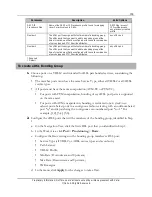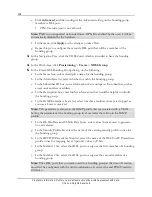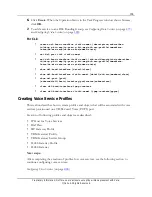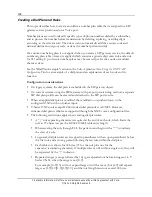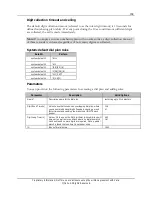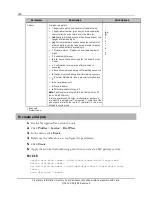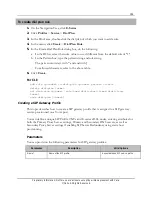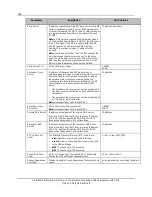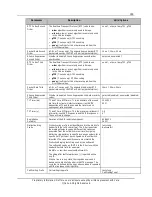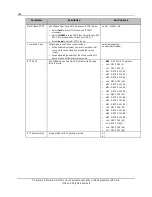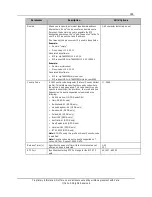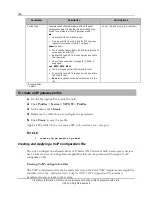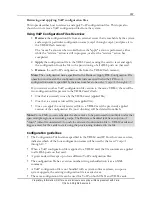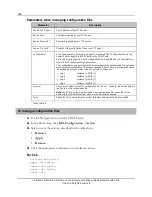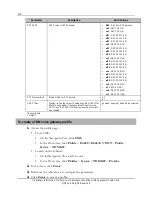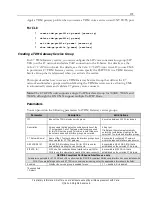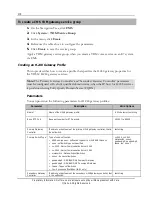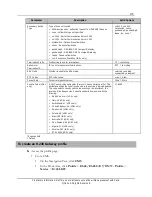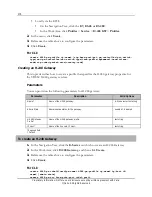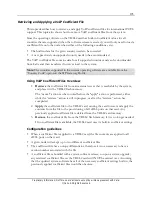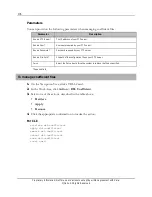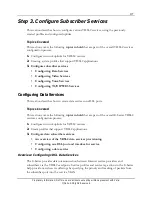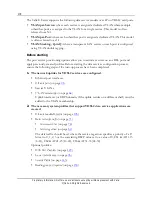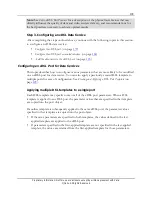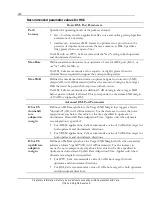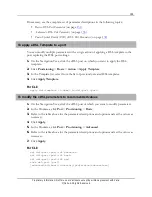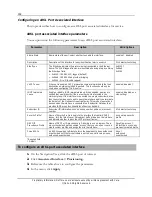
167
Proprietary Information: Not for use or disclosure except by written agreement with Calix.
© Calix. All Rights Reserved.
Retrieving and applying VoIP configuration files
This topic describes how to retrieve, and apply VoIP configuration files. This topic also
shows how to remove VoIP configuration files from the system.
Using VoIP Configuration Files Overview
1.
Retrieve
the configuration file from an external server that is reachable by the system
and assign it a particular configuration name (voip-1 through voip-4), and place it in
the VDSL2 flash memory.
The “cancel” action can be invoked before the "apply" action is performed, either
while the “retrieve” action is still in progress, or after the “retrieve” action has
completed.
2.
Apply
the configuration file to the VDSL2 card, causing the card to reset and apply
the configuration from the file to the provisioning of all xDSL ports on that card.
3.
Remove
the old VoIP configuration file from the VDSL2 flash memory.
Note:
The configuration name specified in the Retrieve/Apply DSL Configuration File
operation must match the configuration file instance specified in the IP Host. A
configuration name is specified by instance number alone or by “voip-<1 through 4>.”
If you retrieve another VoIP configuration file version to the same VDSL2, there will be
two configuration files present in the VDSL2 card’s flash:
One that is currently in use by the VDSL2 card (applied file)
One that is a newly retrieved file (not-applied file).
Once you apply the newly retrieved file to a VDSL2 card, the previously applied
version of the configuration file (now obsolete) will be deleted from flash.
Note:
From CMS, you can schedule the above tasks to be performed on multiple nodes that
span multiple regions or network groups. The Retrieve scheduled task has an option of
"Apply" (default is unselected), to push the retrieved configuration file to VDLS2 cards and
trigger a reset for the cards to start using the provisioning indicated in the file.
Configuration guidelines
The Configuration File Instance specified in the VDSL2 card IP Host for voice services,
indicates which of the four configuration names will be used by that card “voip-<1
through 4>.”
When a VoIP configuration file is applied to a VDSL2 card, the file contents are applied
to all xDSL ports on that card.
A given node will accept up to four different VoIP configuration files.
The configuration file has a version number string embedded into is as an XML
comment.
A VoIP configuration file is not bundled with a system software release, so upon a
system upgrade, the existing configuration file is carried over.
The same configuration file can be used for VoIP on both ONTs and VDSL cards.

